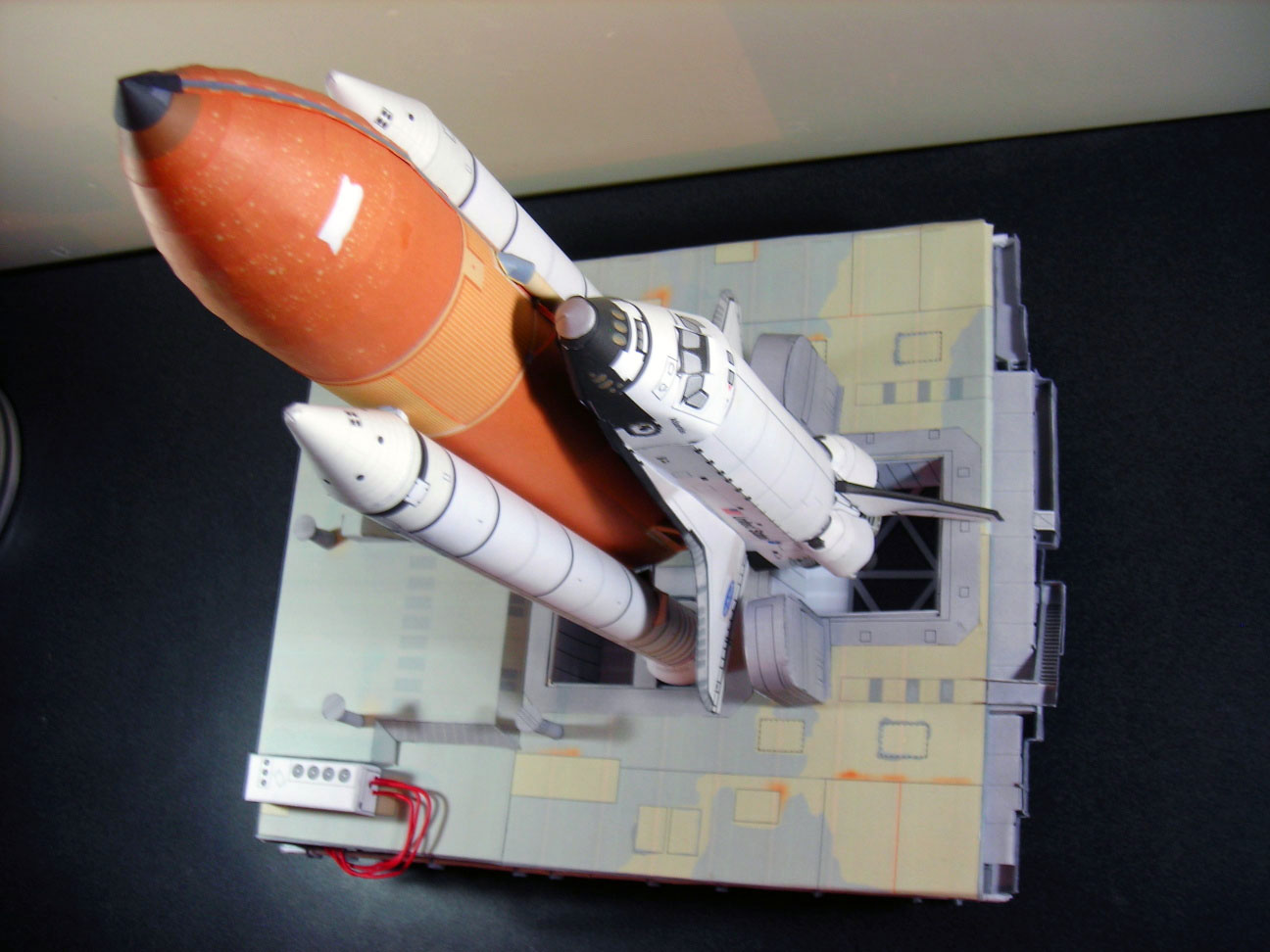AstroBeatle
Nowhere Man
- Joined
- May 1, 2014
- Messages
- 49
- Reaction score
- 0
- Points
- 0
Hey guys, I am starting to take up a hobby on scale plastic modelling and started off last week with a 1/288 scale Space Shuttle with Boosters from Academy. I am looking forward to building more models, and am willing to build non-fiction spacecraft/rockets.
But here's my problem: I think I suck at painting. I tried painting this shuttle last week but I removed it all and instead marked the black areas with permanent marker. Also I had trouble with the decals and broke one of them, so I taped the decals up and taped them on the model.
Can any of you please help me in hand painting detailed scale models? No airbrushes please, due to my budget. Please tell me the right brushes to use, how to paint details and small areas, and how to paint neatly with a brush.
Also please tell me how to properly apply and handle waterslide decals on a model carefully, and even the right tweezers to use. Like I said, I had trouble on my shuttle. The decals were also pretty small and the model is a 1/288 scale model, which is pretty small.
If there are any cheap and efficient tools I can use for cutting, or tweezers for the decals, and other tools for a cheap budget (do not mention airbrush), please tell me about it.
One more thing: for you scale modellers, tell me how you do your models, and what exactly you did when you started out, and on your first model, and how your progress improved over time.
Thanks.
---------- Post added at 05:06 AM ---------- Previous post was at 05:02 AM ----------
And I am thinking of buying the same shuttle model again and starting over to improve my skills as the first one can be a "dummy". I planned to build an STS-1 Columbia model (I tried doing that in my dummy) and in my next one. I also plan to buy a third one someday for an STS-135 Atlantis model.
For the color of the STS-1 fuel tank, can anybody tell me what color of paint I should use, and maybe what colors to mix to get an accurate one? Thanks.
Also, please tell me how to make my own decals because this model does not have the 80s shuttle design on the decals with the NASA "Worm" logo, or the "USA" on the right fin, but has the modern designs such as the "Meatball" NASA insignia. Can anybody tell me how to make my own decals or improvising in making one? Thanks.
---------- Post added at 05:08 AM ---------- Previous post was at 05:06 AM ----------
***: Do you think buying the same model again like I said is an efficient way to practice my skills, or will that be a waste of money? Thanks.
But here's my problem: I think I suck at painting. I tried painting this shuttle last week but I removed it all and instead marked the black areas with permanent marker. Also I had trouble with the decals and broke one of them, so I taped the decals up and taped them on the model.
Can any of you please help me in hand painting detailed scale models? No airbrushes please, due to my budget. Please tell me the right brushes to use, how to paint details and small areas, and how to paint neatly with a brush.
Also please tell me how to properly apply and handle waterslide decals on a model carefully, and even the right tweezers to use. Like I said, I had trouble on my shuttle. The decals were also pretty small and the model is a 1/288 scale model, which is pretty small.
If there are any cheap and efficient tools I can use for cutting, or tweezers for the decals, and other tools for a cheap budget (do not mention airbrush), please tell me about it.
One more thing: for you scale modellers, tell me how you do your models, and what exactly you did when you started out, and on your first model, and how your progress improved over time.
Thanks.
---------- Post added at 05:06 AM ---------- Previous post was at 05:02 AM ----------
And I am thinking of buying the same shuttle model again and starting over to improve my skills as the first one can be a "dummy". I planned to build an STS-1 Columbia model (I tried doing that in my dummy) and in my next one. I also plan to buy a third one someday for an STS-135 Atlantis model.
For the color of the STS-1 fuel tank, can anybody tell me what color of paint I should use, and maybe what colors to mix to get an accurate one? Thanks.
Also, please tell me how to make my own decals because this model does not have the 80s shuttle design on the decals with the NASA "Worm" logo, or the "USA" on the right fin, but has the modern designs such as the "Meatball" NASA insignia. Can anybody tell me how to make my own decals or improvising in making one? Thanks.
---------- Post added at 05:08 AM ---------- Previous post was at 05:06 AM ----------
***: Do you think buying the same model again like I said is an efficient way to practice my skills, or will that be a waste of money? Thanks.

